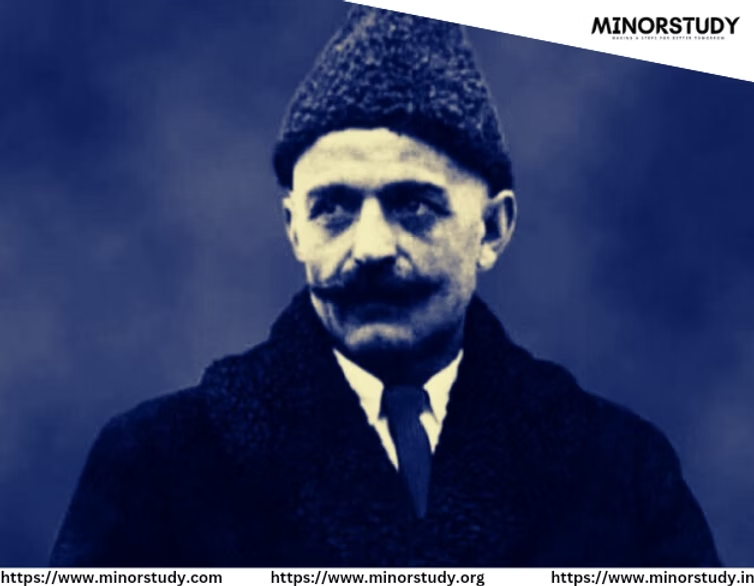Georgij Ivanovič Gurdžiev: A Comprehensive Overview
Who is Gurdjieff?
Georgij Ivanovič Gurdžiev (commonly spelled George Ivanovich Gurdjieff, c. 1866–1949) was a Greek-Armenian mystic, philosopher, spiritual teacher, and composer. He is best known for his teachings on self-awareness, human potential, and the development of consciousness, which he described as “The Fourth Way.” His work has inspired spiritual seekers and thinkers around the world and remains influential in esoteric philosophy and spiritual practice.
Historical Background
Date | Event |
1866/1877 | Born in Alexandropol (modern-day Gyumri, Armenia), though his exact birthdate is debated. |
1890–1910 | Traveled extensively in search of esoteric knowledge, visiting Central Asia, the Middle East, and Africa. |
1912 | Began teaching his philosophy and methods in Moscow and St. Petersburg, attracting followers. |
1917–1924 | Fled Russia during the Revolution and eventually settled in France, establishing his institute near Paris. |
1949 | Passed away in Neuilly-sur-Seine, France, leaving behind a body of work that continues to inspire spiritual seekers. |
Key Teachings and Philosophy
The Fourth Way:Gurdjieff’s teaching is known as “The Fourth Way,” which integrates three traditional paths to self-realization:
The Way of the Fakir: Physical discipline.
The Way of the Monk: Devotion and faith.
The Way of the Yogi: Intellectual and mental focus.
The Fourth Way combines elements of all three while allowing practitioners to engage in ordinary life.
Self-Remembering:Gurdjieff emphasized “self-remembering,” a practice of cultivating awareness of oneself in the present moment. He believed most people live in a state of “waking sleep,” unaware of their true potential.
Centers of Being:Gurdjieff taught that human beings have three centers:
The Intellectual Center (thinking).
The Emotional Center (feeling).
The Moving/Instinctive Center (physical action).
True development requires harmonizing these centers.
Work on Oneself:Gurdjieff emphasized personal effort and conscious work to overcome mechanical habits and unconscious behaviors. He called this process “The Work.”
The Enneagram:He introduced the enneagram symbol, which represents the dynamics of processes and laws governing human development and the universe.
Major Contributions
The Institute for the Harmonious Development of Man:Founded in Fontainebleau, France, this institute served as a center for teaching Gurdjieff’s methods of spiritual development, blending movement, music, and self-inquiry.
Sacred Movements and Dances:Gurdjieff developed a series of sacred dances and movements to help students achieve greater self-awareness and harmony between their mind, body, and emotions.
Collaborations with P.D. Ouspensky:Ouspensky, a prominent student of Gurdjieff, helped document and spread his teachings through writings such as In Search of the Miraculous.
Musical Contributions:Gurdjieff composed music with Thomas de Hartmann, blending spiritual and traditional influences, which he used in his teachings.
Key Works
Book | Description |
Beelzebub’s Tales to His Grandson | A dense allegorical work that explores humanity’s purpose and spiritual struggles. |
Meetings with Remarkable Men | A semi-autobiographical account of Gurdjieff’s early life and spiritual quest. |
Life is Real Only Then, When ‘I Am’ | A series of essays and teachings on self-awareness and inner work. |
Key Concepts
Concept | Explanation |
Waking Sleep | Gurdjieff described most people as living mechanically, unaware of their potential. |
Self-Observation | A practice of observing one’s thoughts, feelings, and actions without judgment. |
Conscious Labor | Deliberate effort to act with awareness and purpose. |
The Enneagram | A mystical symbol representing universal laws and processes. |
Objective Art | Art created with spiritual purpose and transformative power. |
FAQs
What is “The Fourth Way”? It is a path of self-development that integrates physical, emotional, and intellectual work, practiced within the context of daily life.
What is Gurdjieff’s Enneagram? The enneagram is a nine-pointed symbol representing universal processes and laws. Gurdjieff used it to explain spiritual and cosmic principles, though it is distinct from the modern enneagram of personality.
What are Sacred Movements? These are choreographed exercises and dances created by Gurdjieff to help practitioners develop self-awareness and harmony.
Is Gurdjieff’s teaching a religion? No, his teachings are not tied to any specific religion. They are practical methods for inner growth and understanding universal truths.
Significance and Legacy
Influence on Modern Spirituality: Gurdjieff’s ideas have influenced spiritual teachers, psychologists, and philosophers, including Carl Jung and Alan Watts.
Revival of Esoteric Knowledge: He introduced ancient wisdom traditions to the modern world, blending Eastern and Western philosophies.
Personal Development Practices: His teachings continue to inspire methods for self-awareness, meditation, and conscious living.
Summary Table
Aspect | Details |
Birth and Early Life | Born c. 1866/1877 in Alexandropol (modern-day Gyumri, Armenia). |
Philosophy | “The Fourth Way” – integrating body, mind, and emotions for spiritual growth. |
Key Contributions | Sacred Movements, the Enneagram, and esoteric teachings. |
Legacy | Influenced modern spirituality and personal development. |
Major Works | Beelzebub’s Tales to His Grandson, Meetings with Remarkable Men. |
Conclusion
Georgij Ivanovič Gurdžiev: Gurdjieff’s teachings remain a cornerstone of modern esoteric philosophy and spiritual practice. His emphasis on self-awareness, harmonizing body, mind, and emotions, and breaking free from mechanical habits offers timeless wisdom for those seeking a deeper understanding of life. Through his work, Gurdjieff continues to inspire seekers to embark on the transformative journey of self-realization.








